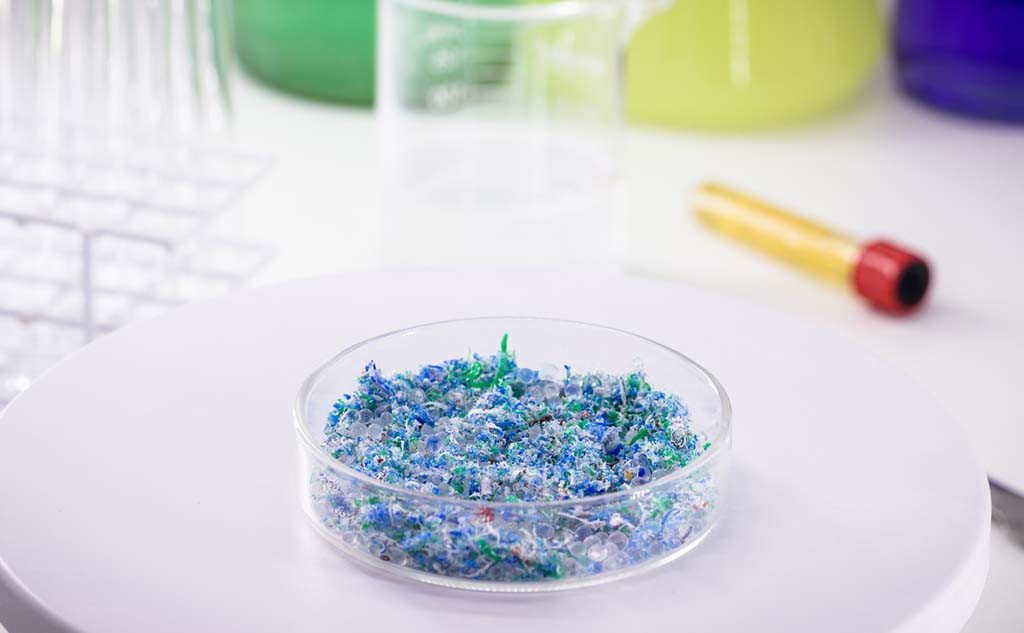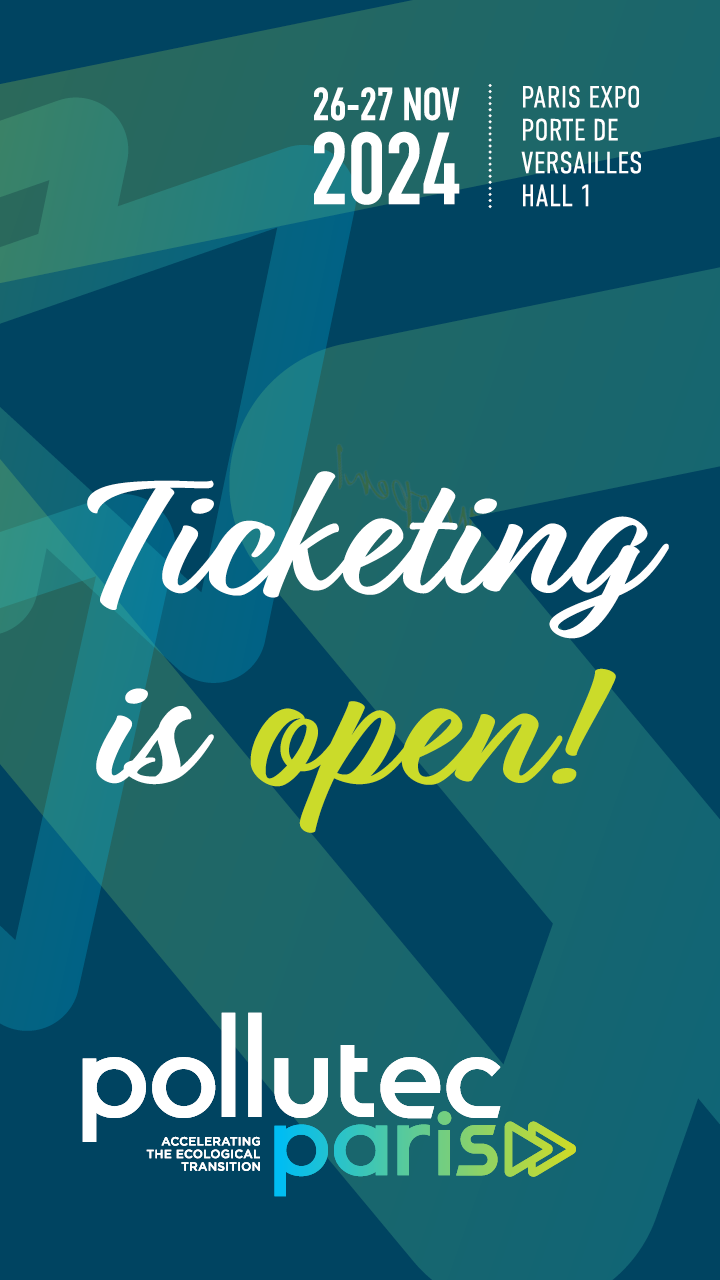In 2021, global plastic production reached 390.7 million tonnes (Mt), of which 352.3 Mt (90.2%) was fossil-based, 32.5 Mt (8.3%) was post-consumer recycled and 5.9 Mt (1.5%) was bio-based.(1) In other words, there remains much work to be done on recycling. Although mechanical processing is currently predominant in this field (used for 99% of thermoplastic waste), a number of chemical recycling techniques are being developed and industrialised.
Plastics: a wide family
Globally, plastics account for 10% of our oil consumption. They are made from naphtha, a liquid produced during oil refining, which is heated under high pressure then rapidly cooled to break down the hydrocarbon molecules into elementary molecules. The monomers produced are then combined to create polymers, which can incorporate additives (such as modifiers, pigments, dyes, solvents or antioxidants) to alter or enhance their properties.
These polymers can be divided into two families: thermoplastics(e.g. PE, HDPE, PVC, PET, polypropylene, polystyrene, polyamides) which soften when heated and harden again on cooling – a reversible process, – and thermosets (e.g. polyurethane, unsaturated polyester, silicone) which when heated harden irreversibly to a solid state. Thermoplastics (such as polypropylene, PE, PET and polystyrene) are mostly used in packaging (almost 50%) as well as in the building/construction and automotive industries.
Mechanical recycling
After collection, thermoplastic waste is sorted, washed, crushed, extruded and processed into flakes or pellets, which can then be reused as recycled feedstock. The various stages of sorting, separating and recovery are complicated by the variety of polymers, and by potential external contamination during their life cycle. The processes cannot eliminate internal contamination resulting from use of additives. This ultimately means they cannot be turned back into the original products. Moreover, the effects of the temperatures involved in the process can result in deterioration of the recycled material. For example, a bottle can only be recycled seven times. Finally, the mechanical recycling process (known as “plastic-to-product”) does not change the structure of the polymer.
Chemical and physico-chemical recycling
Chemical recycling is a way of producing new materials by modifying the chemical structure of the polymer and purifying the output. There are several processes, including depolymerisation and conversion.
Depolymerisation returns the polymer to its original monomers, through solvolysis (use of solvents) or thermolysis (breaking-down through heating). This “plastic-to-monomer” recycling results in a material similar to the virgin material.
Recycling through conversion uses pyrolysis or gasification to convert the waste’s chemical structure into a mixture of base elements (virgin monomers) that can be reused in the petrochemical industry. This is known as “plastic-to-feedstock” recycling.
Another recycling method – dissolution – comprises the recovering of additive-free polymer chains. Although the process does not modify the polymer’s structure, this method is often linked to chemical recycling as several of the processes involve chemical stages, such as the use of specific solvents for more thorough decontamination.
Biological recycling
Biological (“plastic-to-compost”) recycling uses living organisms or enzymes to break the polymers down into compost or to synthesise useful compounds through biochemical transformation. For example, the French company Carbios has developed an enzymatic recycling process for PET plastics and fibres, together with biodegradation technology for PLA (a bio-based polymer).
After depolymerisation using a specific enzyme, the resulting monomers are purified and can be repolymerised into PET of the same quality as virgin petrochemical PET. This process can be used for clear, opaque or complex materials or for those of textile origin, such as polyesters.
The main barriers
Clearly, there is no shortage of solutions. However, there remain a number of barriers to be removed – the first being the question of supply, which applies to all forms of recycling. In order to achieve sufficient critical mass, there needs to be guaranteed access to the resource. Hence the need to develop Extended Producer Responsibility (EPR) schemes for waste collection and to improve the quality of sorting. In addition to the volume of inputs, their quality is also fundamental – necessitating pre-treatment and purification processes.
Another major barrier to chemical or physico-chemical recycling is the cost of the technologies. Some are much more energy-intensive, or require more inputs and/or materials than others. To address this, current work in this field is focusing on low-temperature processes.
Finally, work still needs to be done on the environmental and climate impacts of the different technologies. For example, what CO2 emissions are associated with producing a chemically recycled food-grade polymer, compared with a virgin polymer?
From a wider perspective, although there is as yet no trend toward massive reduction in the volumes produced (while this is being discussed for single-use plastics it cannot address all, particularly in the medical sector) and although recycling targets are becoming stricter, research into eco-design and recyclability needs to be continued and supported.
Examples of projects in development
Demand for recycled materials is currently outstripping supply. In France, the primary aim of the national “Recyclability, Recycling and Reincorporation of Recycled Materials” strategy of September 2021 is to develop industrial capacity to produce 2 million tonnes of recycled plastics per year by 2025, so that they can be reincorporated. Accordingly, two calls for projects were issued in 2022, under the France 2030 investment plan. The first (in January) was designed to support chemical and enzymatic recycling projects, and the second (in November) was mainly to support industrialisation of the processes.
As an example, Carbios received a total of 54 million euros from the French government and the Grand Est region to finance its first PET bio-recycling plant, in Longlaville (Grand Est) and to accelerate its R&D work. It should also be noted that, in the Priority Research Programmes and Equipment (PEPR) plan launched on 1 June, the emphasis under plastics is on chemical recycling.
TotalEnergies signed agreements in 2022 guaranteeing it a supply of recycled feedstock, one with Honeywell in Andalusia (up to 30,000 tonnes a year) and the another with New Hope Energy in the United States (up to 100,000 tonnes). Total will transform this feedstock into polymers with identical properties to their virgin equivalents, suitable for food-grade packaging and other high added value applications.
In France, TotalEnergies has teamed up with Paprec to develop the first chemical recycling sector for plastic films. Paprec will sort and separate plastics in Amiens (Hauts-de-France) and Total will handle the chemical recycling at its site in Grandpuits (Île-de-France). The plant, expected to be commissioned in 2024, will produce up to 15,000 tonnes a year of plastics having properties identical to the virgin plastics, and suitable for food-grade applications.
US company Eastman has installed a facility in Port-Jérôme (Normandy) for the depolymerising of polyester-rich plastic waste using methanol. With a target of processing 220,000 tonnes of waste a year, and producing up to 200,000 tonnes of recycled feedstock, this facility is set to be the world’s largest “material-to-material” molecular recycling plant.
Meanwhile, Suez, Loop Industries (Canada) and SK Geo Centric (South Korea) are joining forces to develop a plant in Saint-Avold (Grand Est) expected to produce virgin-quality and infinitely-recyclable PET. The plant is set to produce up to 70,000 tonnes a year from 2027, and to save 255,000 tonnes of CO2 emissions a year compared with petrochemical production. It will be the first “Infinite Loop” facility in Europe.
New opportunities
The French TEAM2 cluster is working on catalytic screening. As part of the Plastiloop 2.0 project the teams are using « machine learning» tools to understand and predict the catalytic systems involved. New prediction algorithms are also being studied.
Another interesting approach is the CIMPA project to develop recycling for multilayer plastic films, which should be completed by mid-2024. Almost 3 million tonnes of these films currently go to incineration or landfill due to lack of adequate solutions. The project, coordinated by the Industrial Technical Centre for Plastics and Composites (IPC), is focusing on innovative sorting (including the use of NIR), mechanical and physical recycling, and an advanced decontamination process.
- “Plastics – the Facts 2022”, Plastics Europe, October 2022.
- Not all technologies can be applied to all polymers, e.g. solvolysis is more suitable for PET and polyurethane; pyrolysis for PET, polypropylene and polystyrene; dissolution for PVC.




